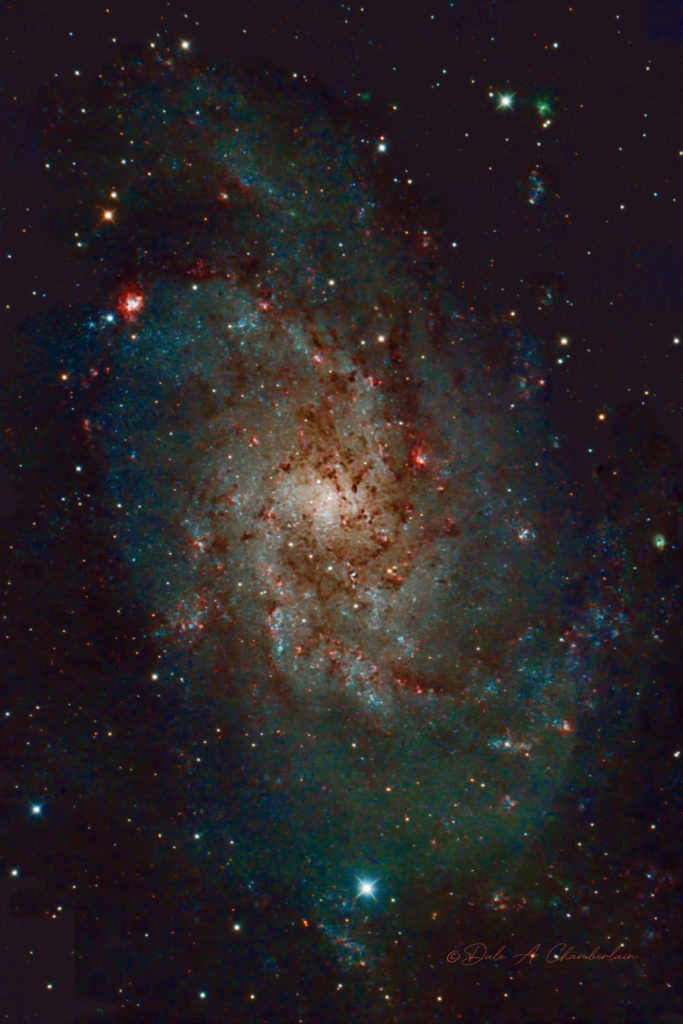
Object: The Triangulum Galaxy is a spiral galaxy 2.73 million light-years from Earth in the constellation Triangulum. It is catalogued as Messier 33 or NGC 598. The Triangulum Galaxy is the third-largest member of the Local Group of galaxies, behind the Milky Way and the Andromeda Galaxy. It is one of the most distant permanent objects that can be viewed with the naked eye.
The galaxy is the smallest spiral galaxy in the Local Group. It is believed to be a satellite of the Andromeda Galaxy due to their interactions, velocities, and proximity to one another in the night sky. The galaxy gets its name from the constellation Triangulum, where it can be spotted.
The Triangulum Galaxy is sometimes informally referred to as the “Pinwheel Galaxy” by some amateur astronomy references, in some computerized telescope software, and on some public outreach websites. With a diameter of about 60,000 light-years, the Triangulum galaxy is the third largest member of the Local Group of galaxies, roughly 60% the size of the Milky Way. It may be a gravitationally bound companion of the Andromeda Galaxy. Triangulum may be home to 40 billion stars, compared to 400 billion for the Milky Way and 1 trillion stars for Andromeda Galaxy.
Taken: September 27, 2022
Telescope: Astro-Tech 14” RC with Starizona Apex-ED L 0.65x focal reducer
Mount: Paramount ME II
Camera: ZWO ASI2600MC-Pro (cooled to 0C; Gain 100) Bin 1×1.
Guiding: No Guiding
Focuser: Moonlite Nitecrawler
Rotator: Moonlite Nitecrawler
Filters used: Optolong L-Pro
Exposures: 147×90 seconds for a total exposure time of 3.675 hours; calibrated with 40 dark frames, 40 flat frames with 40 dark-flats.
Seeing Conditions:
Image capture and telescope control: Nighttime Imaging ‘N’ Astronomy with (N.I.N.A.) / TheSkyX Pro with a SkyShed POD MAX observatory.
Processed with PixInsight, Photoshop CC 2022